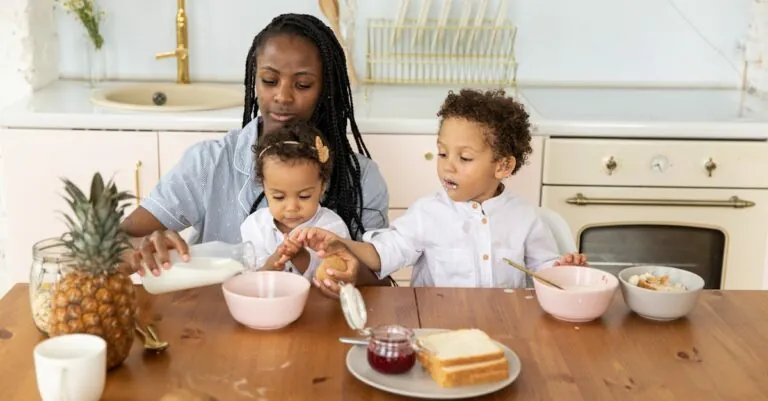Table of Contents
ToggleTiny tutus and little pirouettes—ballet classes for toddlers are where the magic begins! Imagine your little one twirling around the room, channeling their inner swan while you try to keep up with their boundless energy. These classes not only introduce them to the graceful world of dance but also help develop coordination, balance, and social skills.
Overview of Ballet Classes for Toddlers
Ballet classes for toddlers provide a structured environment that nurtures creativity and physical development. These classes typically cater to children aged 2 to 4 years, focusing on foundational techniques suitable for their developmental stage.
Classes introduce basic ballet movements through imaginative activities, fostering an appreciation for music and rhythm. Teachers often use props like scarves or hoops to engage children and enhance the learning experience.
Social interaction plays a vital role, as toddlers learn to collaborate with peers while building friendships. Communication skills improve as they follow instructions, express themselves, and share experiences.
Parents often appreciate the benefits of physical activity integrated into dance. Coordination improves through various movements, while balance skills strengthen as toddlers learn to control their bodies.
Many ballet schools offer different class formats, including structured classes and playful, exploratory sessions. Classes generally last 30 to 45 minutes, keeping toddlers engaged without overwhelming them.
Choosing the right class involves considering the teaching style and environment. A positive atmosphere encourages enthusiasm, leading to a love for dance that may last a lifetime.
Locations for classes can range from dedicated dance studios to community centers, providing accessibility to families. Cost varies based on location and class duration, so parents can find options that fit their budgets.
Overall, ballet classes for toddlers cultivate essential life skills while allowing them to express their creativity in a joyful setting.
Benefits of Ballet Classes for Toddlers
Ballet classes for toddlers offer numerous advantages that promote their overall growth and development.
Physical Development
Physical development thrives in ballet classes for toddlers. These classes enhance coordination as children learn to move in sync with music. Balance improves through various movements, helping toddlers gain body awareness. Flexibility increases with stretching exercises, allowing them to reach and bend gracefully. Core strength develops as they engage in different positions, essential for stability. Additionally, timing and rhythm become natural as toddlers mimic dance steps. Foundations for physical health establish in this supportive environment, fostering lifelong habits.
Cognitive Skills
Cognitive skills benefit significantly from ballet classes for toddlers. Classes encourage memory retention as children learn choreography and sequences. Following directions becomes second nature through structured lessons. Spatial awareness expands as toddlers navigate around the studio, understanding personal space. Observation skills sharpen as they watch instructors and peers perform. Problem-solving abilities hone during creative exploration, where children make sense of movements. Engagement in music and rhythm deepens their appreciation for patterns and beats, stimulating cognitive development.
Social Interaction
Social interaction flourishes in ballet classes for toddlers. In a group setting, children develop communication skills through sharing and collaborating. They learn the importance of teamwork by participating in ensemble routines. Friendships form as toddlers celebrate successes together, promoting emotional bonds. Classes also offer a safe space for expressing feelings while managing competition. Following instructions fosters respect for authority figures, enhancing their overall behavior. Additionally, interaction with peers nurtures empathy as they develop an understanding of others’ emotions.
Choosing the Right Ballet Class
Selecting the ideal ballet class for toddlers requires careful consideration of several factors to ensure a positive experience.
Factors to Consider
Age appropriateness plays a significant role. Classes typically cater to children aged 2 to 4 years, focusing on developmental milestones. Teaching style is equally important; engaging instructors promote creativity and skill development. The class environment should feel safe and welcoming, fostering a love for dance. Parents should assess locations, choosing between dance studios and community centers based on accessibility. Cost can vary widely, so families must consider their budget when selecting a class. Observing a trial class helps gauge the atmosphere and instructor interaction before committing.
Types of Classes Available
A variety of ballet class formats exist for toddlers. Creative movement classes encourage exploration through play and imagination. Structured classes introduce basic ballet techniques in a fun way, marrying learning with enjoyment. Parent-child classes allow caregivers to participate, making it a shared experience. Some studios offer themed classes that integrate storytelling, captivating toddlers while teaching dance basics. All formats typically run for 30 to 45 minutes, keeping sessions engaging and age-appropriate. Exploring these options helps parents choose the best fit for their child’s interests and development.
Tips for Parents
Choosing the right ballet class starts with observing a child’s interests and readiness. Involve toddlers in the decision-making process by discussing their excitement for dance. Engaging them in this way encourages ownership of their experience.
Consider age-appropriate classes designed for 2 to 4-year-olds. These sessions focus on basic techniques and foster an early love for dance. Playful activities should dominate the curriculum, maintaining toddlers’ attention while ensuring fun.
Pay attention to teaching styles that resonate with your child. An engaging instructor can make a significant difference in a toddler’s learning experience. Positive reinforcement and encouragement motivate children to explore movements confidently.
Evaluate class sizes for individual attention. Smaller groups help instructors focus on each child’s needs, enhancing their learning. Social interaction thrives in these environments, promoting friendships and collaboration.
Visit potential class locations to assess the environment. Friendly and welcoming studios create a comfortable space for toddlers. It’s also beneficial to check for cleanliness and safety measures in place.
Observe a trial class when possible. Watching the interaction between the instructor and students provides insights into the class dynamics. Noticing how other toddlers respond can help gauge if it’s the right fit.
Discuss costs upfront to avoid surprises. Various formats and locations might have different pricing structures. Ensure the class aligns with your budget while still providing quality instruction.
Remain flexible and patient during this process. Every child learns at their own pace, and some may take longer to adjust to classes. Supporting this journey with encouragement fosters resilience and a lasting appreciation for dance.
Ballet classes for toddlers offer an enriching experience that supports their physical and emotional growth. By introducing young children to dance, these classes cultivate essential skills that last a lifetime. The combination of structured lessons and imaginative play creates a joyful environment where toddlers can thrive.
Parents play a crucial role in selecting the right class that aligns with their child’s needs and interests. By involving toddlers in the decision-making process, they can foster a love for dance that encourages creativity and self-expression. With the right approach, ballet classes can become a delightful journey for both toddlers and their families, paving the way for a lifelong appreciation of the arts.








